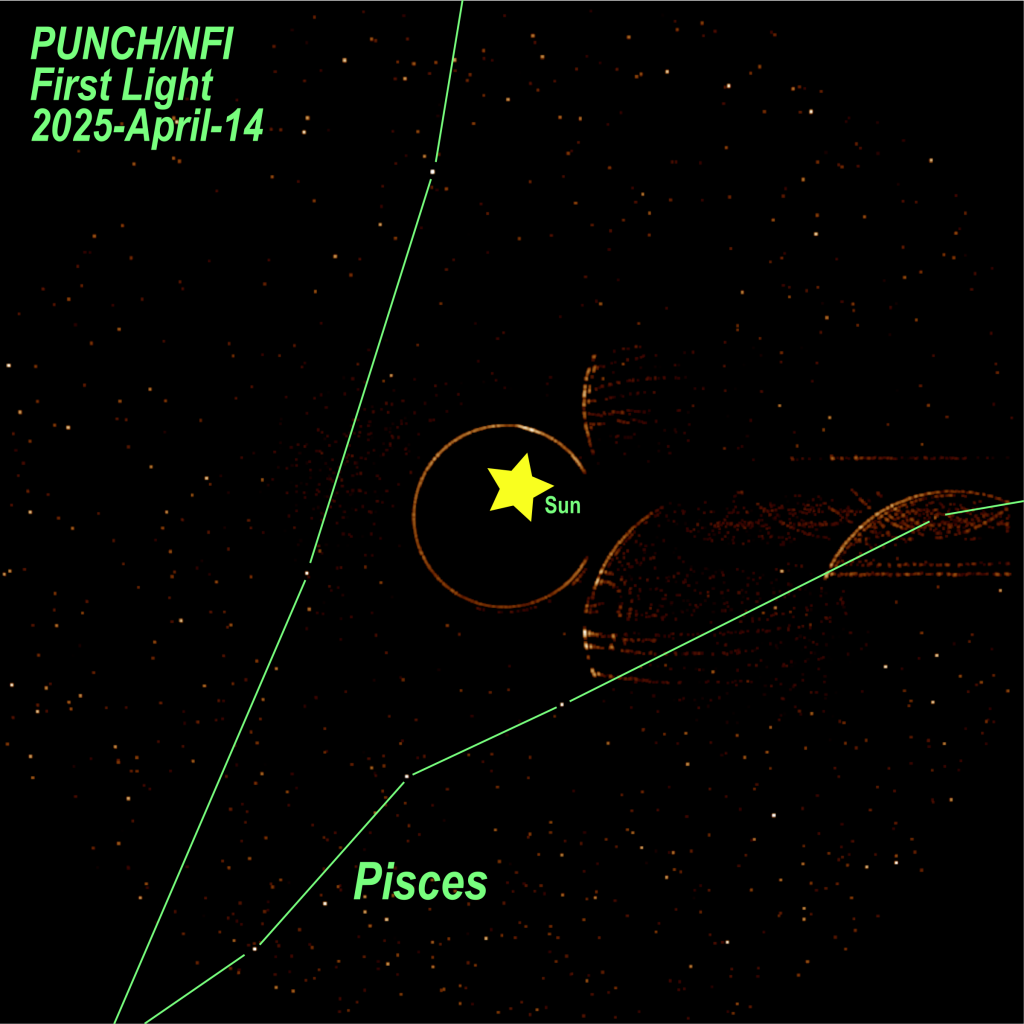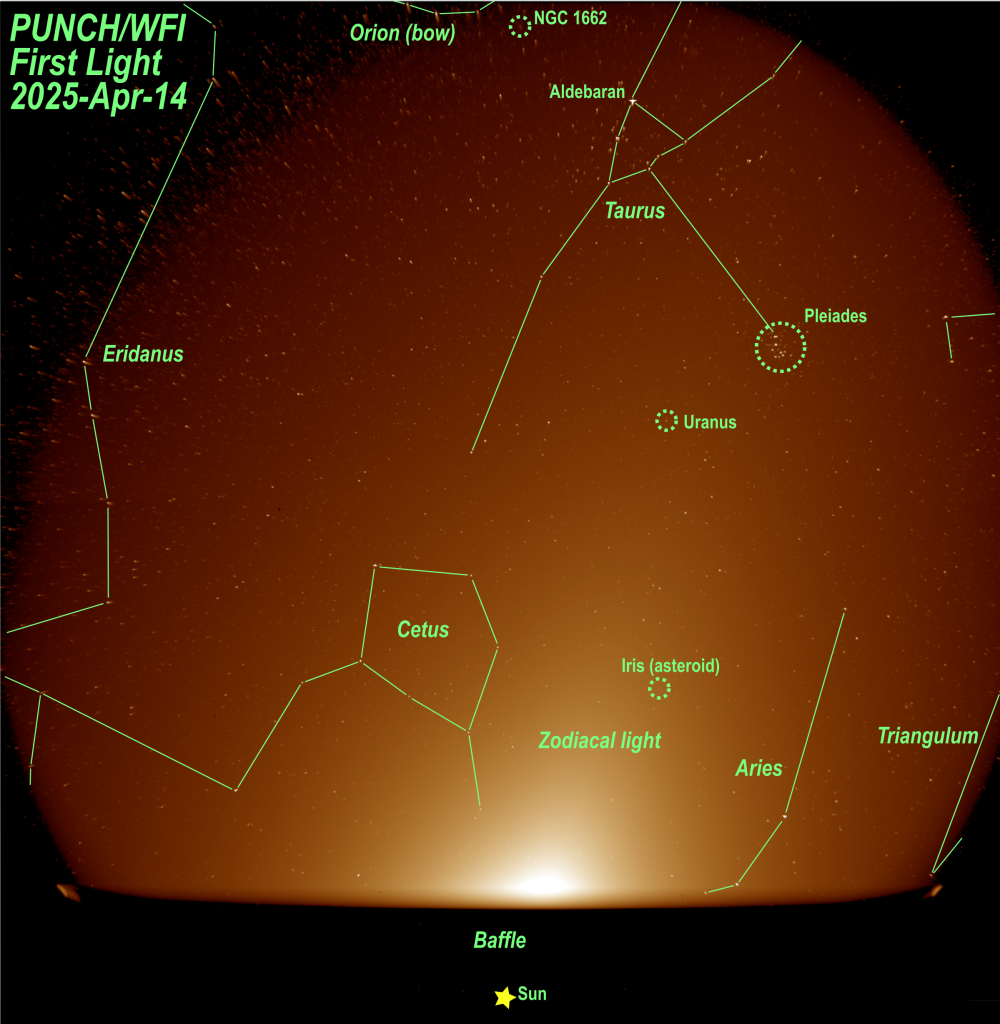PUNCH Mission Unveiled: Exploring How the Sun Shapes Our Space Weather
On March 12, NASA initiated its PUNCH (Polarimeter to Unify the Corona and Heliosphere) mission by launching a quartet of Earth-orbiting satellites designed to investigate how solar activities impact our planet’s surrounding space environment. Recently, these spacecraft deployed their imaging systems and acquired what they call "first-light" photographs—a significant achievement for the project. These initial pictures confirm that all camera functions are optimal and correctly aligned, paving the way for subsequent phases of exploration.
Related: NASA's PUNCH mission will investigate how the Sun affects the surrounding space environment.
The parts of PUNCH
The PUNCH mission comprises three spacecraft, each outfitted with a wide-field imager (WFI), along with another craft featuring a narrow-field imager (NFI) coronagraph. These WFI-equipped units provide an extensive field of vision for researchers studying the solar wind as it travels vast distances through space away from the sun. Conversely, the NFI unit focuses closely on areas nearer to the sun, blocking direct sunlight to capture images of the ring-like area immediately surrounding the sun’s surface. This specialized perspective enables scientists to observe the enigmatic and extremely hot corona—the outermost layer—of our star. By integrating these four distinct yet concurrent visual perspectives into a single composite image, astronomers gain insights into both minute details and broader patterns simultaneously. Specifically, this approach helps them understand how alterations within the corona influence the solar wind flowing across the entire solar system towards Earth.

NFI first light
On April 14, the NFI initially turned its gaze upward toward the sky, capturing an image of the Sun set against the backdrop of the Pisces star constellations. This particular view has undergone specialized filtering to highlight these distant stars, as they would typically be obscured by the intense zodiacal light caused by sunlight reflecting off dust particles within the inner reaches of our solar system. At the center, one can also observe a thin slice of the Sun’s corona, evoking the appearance seen during an annular solar eclipse.
You might notice several strange, streaky crescent-shaped artifacts at right. These arise from a small misalignment between the imager and the Sun, allowing stray sunlight to glint off the optics where it's not quite obstructed by the coronagraph. Experts will utilize these and following images to fine-tune the NFI’s positioning relative to the celestial sphere, ensuring complete synchronization with our target star and minimizing unwanted illumination for upcoming scientific observations. This adjustment process aims to permit only about one percent of the corona's light to pass through to the imaging device, thereby offering unimpeded glimpses at delicate formations and alterations inside the corona as solar matter is ejected outward.

WFI first light
Two days later, on April 16, the three WFIs got their first look at the Sun, taking in a broad view across the solar system. These instruments are designed to look at the region of space out to some 45° from the Sun's position, roughly out to the distance of Earth's orbit projected on the sky. Their fields of view don't overlap, but instead form a trefoil pattern that rotates over time.
That immense field of view is evident in the WFI first light image, which marks the position of the Sun at bottom (intentionally outside the field) and outlines several constellations and other objects for reference, including the asteroid 7 Iris photobombing the shot at lower right. Prominent across the entire image is the intense glow of the zodiacal light.
Science soon
It's worth noting that these first light images look very different from the way PUNCH's science observations will appear. Although these shots show numerous stars and the bright zodiacal glow, scientists will remove all this background light from the final images. This is so PUNCH can show clearly detailed structure within Sun's corona and solar wind, which can be quite faint. Additionally, PUNCH will be the first mission to show these features in polarized light, which reveals how the electric fields of the light waves are aligned and will provide never-before-seen clues about how the Sun's wind behaves and evolves over time.
PUNCH's commissioning phase is expected to last 90 days, after which the group of four satellites will commence its two-year science mission.
The post PUNCH sees first light, prepares to study how the Sun creates our space weather appeared first on Magazine .

Posting Komentar untuk "PUNCH Mission Unveiled: Exploring How the Sun Shapes Our Space Weather"
Please Leave a wise comment, Thank you